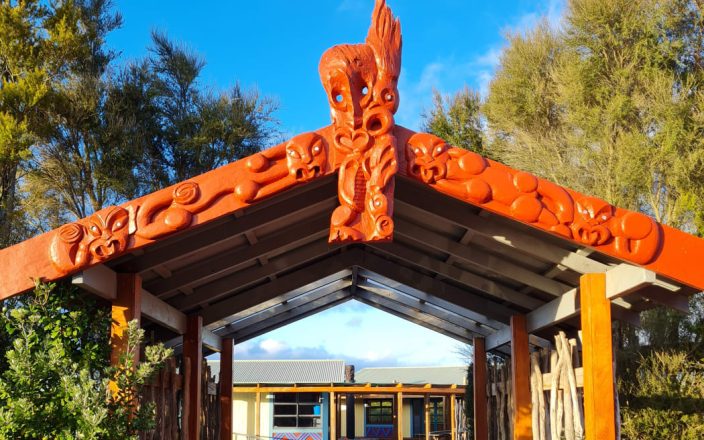タマキ・ヌイ・ア・ルアのテ・クラ・カウパパ・マオリのワハロア。
写真:RNZ/Pokere Paewai
ワイタンギ法廷での判決を受けて、クラ・カウパパ・マオリが大勝利を祝っている。裁判所は政府に対し、カウパパ・マオリの学校向けに独立した教育機関を設立するよう求めた。これはクラが長年望んでいたことだ。この勧告は、昨年、テ・ルナンガ・ヌイ・オ・ンガー・クラ・カウパパ・マオリが、62クラのカウパパ・マオリに相当する条約を主張した後に出されたものです。
裁判所は、2018年から2022年の間に政府が学校制度を見直す際に条約の原則に違反したことに合意しました。政府は謝罪し、クラとの関係を修復すべきだと言った。目標は、教育省がクラと緊密に連携し、クラのニーズを理解することです。
裁判所は、独立した教育機関というクラの考えを支持している。「国王が独立したカウパパ・マオリ教育機関の設立を約束するよう勧告する」と述べ、詳細はマオリの利害関係者と共同で作成した。
ルーナンガ・ヌイの共同議長であるキャシー・デューズ博士は、これを大きな進歩と呼びました。「これは私たちが長年目指してきたことです」と彼女は言いました。この新しい権限は、教育省ではなくマオリが管理することになります。
デューズは、法廷で証言した人からのコメントに言及した。「給料をくれれば、邪魔にならないように」。つまり、政府がクラに資金を提供し、クラが自分で教育を管理できるようにすべきだということだ。デューズは、教育はすべてマオリ語で行われることになり、生徒の考え方や感じ方が変わると考えています。
クラは26年間、この独立した権限を求めてきました。
ルーナンガ・ヌイの最高経営責任者であるホヘパ・キャンベルは、この決定にわくわくすると感じました。「マオリのクラ・カウパパに住む家族全員にとって素晴らしいニュースです」と彼は言います。今回の決定により、クラの繁栄のために前に進むための明確な原則が示されたと強調しました。
教育省は次のように答えました。「法廷からの報告を受け入れ、歓迎します。その調査結果と勧告を慎重に検討します。」
現在、クラ・カウパパ・マオリには62のクラ・カウパパがおり、約7,423人の学生が在籍しています。裁判所は、新しい機関の設立には時間がかかるだろうと警告したが、それまでの間、政府は申請者と協力してクラ・カウパパ・マオリに関する具体的な政策を策定するよう提案した。
法廷の調査結果は、政府が条約の原則を尊重せず、請求者とその学校に困難をもたらしていることを示した。




























































